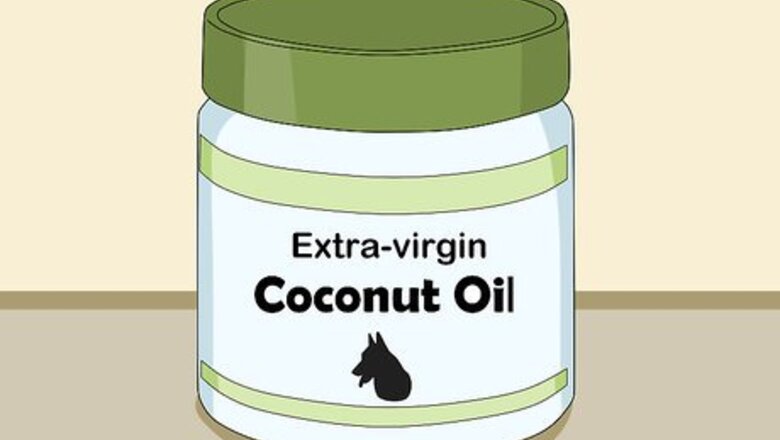
views
X
Research source
While more research is needed to determine how effective (if at all) it is, you can safely give it to your dog. Some believe that feeding your dog coconut oil or rubbing it through their fur can reduce symptoms and improve the look of your dog's coat.
Feeding Your Dog Coconut Oil
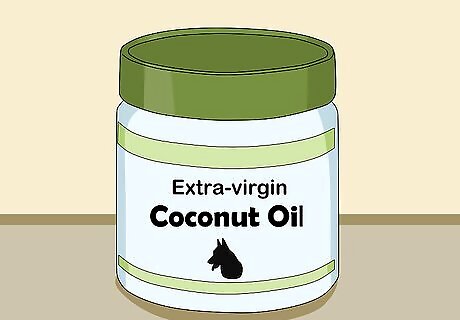
Buy extra-virgin coconut oil. Since your dog will be ingesting the oil, choose the highest quality coconut oil you can find. If possible, purchase organic oil. Avoid buying refined, bleached, and deodorized (RBD) coconut oil because the processing destroys nutrients. You can find high-quality coconut oil at grocery stores, pharmacies, and natural food stores.
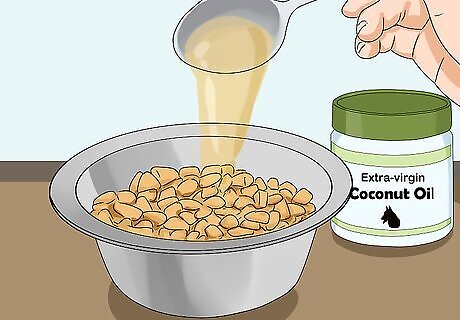
Give your dog the oil on a spoon or mixed into food. While you can give your dog 1 teaspoon (4 g) of coconut oil for every 10 pounds (4.5 kg) it weighs, you want to gradually work up to this amount. Start by feeding your dog 1/4 of this amount for a few days before you increase the amount. Feed the coconut oil directly off of the spoon or stir it into your dog's food. If you feed your dog too much coconut oil right away, it may have diarrhea and indigestion. For example, if your dog weighs 20 pounds (9 kg), start by feeding your dog 1/2 teaspoon (2 g) of oil for a few days. Gradually work up to 2 teaspoons (8 g).
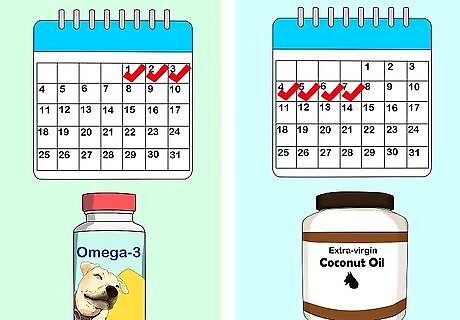
Balance the omega-3 oils in your dog's diet. Consider your dog's overall diet and ensure that it doesn't get too many essential fatty acids (omega-3s) that are found in coconut oil. If your dog takes a supplement that contains omega-3 oil, alternate days when you give your dog the supplement and coconut oil. Too much omega-3 can cause digestive problems, trouble with blood clotting, and insulin sensitivity. For example, if you give your dog an omega-3 oil three days a week, alternate with the coconut oil for the other four days.

Ask the veterinarian about using coconut oil in the long term. Some veterinarians are skeptical about the potential benefits of coconut oil on the dog's skin. Ask your veterinarian about giving your dog coconut oil as part of its regular diet. If your dog is overweight, the vet might recommend that you only give the oil in the short term because coconut oil contains 120 calories for every tablespoon (12 g).
Applying Coconut Oil to Your Dog's Skin
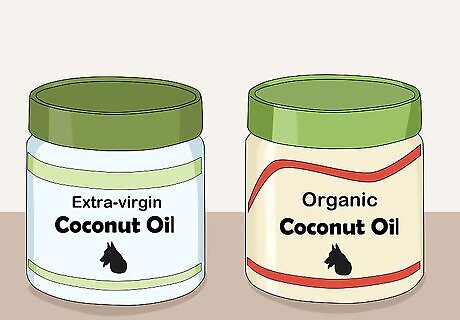
Purchase high-quality coconut oil. Look for an unrefined, extra-virgin, organic coconut oil since it will be higher in nutrients than highly refined coconut oils. Avoid using refined, bleached, and deodorized (RBD) coconut oil. Keep in mind that coconut oil might become liquid if it's in a warm location, but will harden as it cools. Buy high-quality coconut oil at grocery stores, pharmacies, and natural food stores.
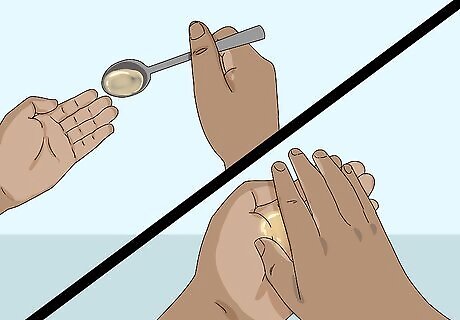
Warm the oil between your hands. If the coconut oil is in liquid form, spoon about 1/2 teaspoon (2 g) of coconut oil into the palm of one hand. Rub your hands together so they're coated with the oil. If you're using coconut oil that is solid, scoop a small spoonful into your hand and rub your palms together for a minute. The coconut oil will soften and become liquid.
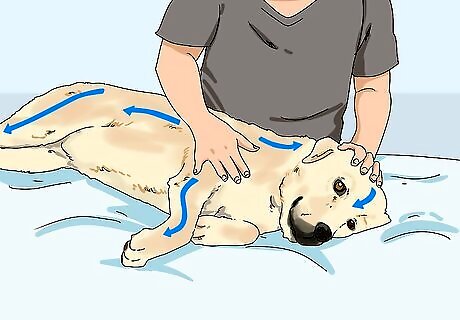
Rub the oil over your dog's skin. Rub your oiled hands over the skin of your dog's back, lower legs, and stomach. You should also rub it over any skin that is dry, itchy, red, or flea-bitten. Apply the oil once or twice a day while your dog is suffering from skin problems. Reapply oil to your hands as needed. Mix coconut oil with your dog's food. "I started putting coconut oil in my dog's food. His coat is really nice now and there are no more fleas. It works better than flea collars and the commercial chemical drops." - Dex P. Make a coconut oil rub. "I made a homemade coconut shampoo, also discovered on Pinterest. Now, my dog is sleeping like a baby as he no longer has fleas." - Roseanna M. Use coconut to improve coat shine. "We now have two happy dogs! No fleas, coconut oil massage for a week (which they loved) did the trick. Hugo (our American Akita) and Little Tallulah (our Pomeranian) also have beautiful, shiny coats." - Rita G. Leave the oil on to see success. "I followed the instructions on when to reapply and not washing it off which was crucial. It also helped to use put a shirt on the pet to keep the oil." - Tania H. Coconut oil is great for dogs with sensitivities. "I have tried many different things for flea control. My little girl is allergic to fleas and has epilepsy, so I can't use anything that may trigger a seizure. Nothing has worked until now. I was running out of options and the fleas were overwhelming her. But, coconut oil is truly working great; plus, it's helping her sensitive skin!" - Ron Hartman (wikiHow Community Member) Have a story our readers should hear? Share it with 1 billion+ annual wikiHow users. Tell us your story here.
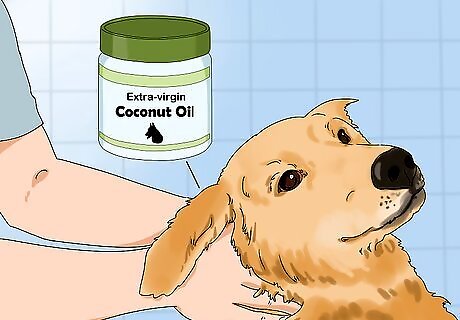
Rub coconut oil through your dog's fur. If your dog is suffering from fleas, you'll also need to treat your dog's fur. Rub more coconut oil between your hands and run your fingers through your dog's fur. Remember to rub coconut oil through the fur on your dog's underbelly. Apply the coconut oil once or twice a day while you're dog is infected with fleas. You can use the coconut oil for several days or weeks. Continue to apply the coconut oil until the fleas are gone.

Put a sweater on your dog. Don't worry if your dog immediately licks the coconut oil off of its fur or skin, since it's safe to ingest. But if you're concerned that the coconut oil isn't coming into contact with your dog's skin or fur, you might need to put a sweater on your dog. The sweater will prevent the dog from licking off the oil.

















Comments
0 comment